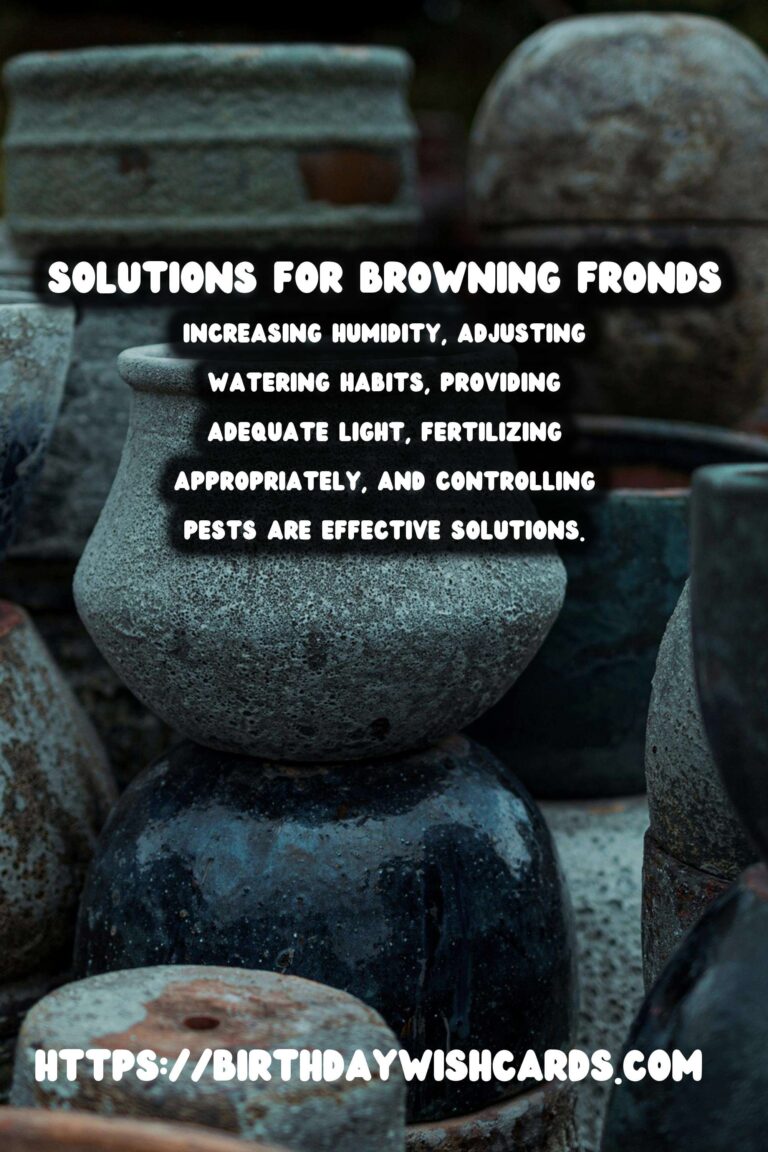
Boston ferns are a popular houseplant, known for their lush, feathery foliage and ability to enhance indoor environments. However, one common issue that many plant owners face is browning fronds. In this article, we will explore the causes of browning fronds in Boston ferns and provide effective solutions to restore their vibrant green appearance.
Understanding Browning Fronds in Boston Ferns
Browning fronds can be a sign of distress in Boston ferns, often indicating that the plant’s needs are not being met. It is essential to diagnose the underlying cause to provide the appropriate care and prevent further damage.
Common Causes of Browning Fronds
Lack of Humidity: Boston ferns thrive in humid environments. In dry indoor conditions, the fronds can turn brown and crispy.
Improper Watering: Both over-watering and under-watering can lead to browning fronds. These ferns prefer consistently moist but not waterlogged soil.
Insufficient Light: While they do not need direct sunlight, Boston ferns require bright, indirect light to flourish.
Nutrient Deficiency: A lack of essential nutrients, particularly nitrogen, can cause fronds to brown.
Pest Infestation: Pests such as spider mites can cause fronds to brown and deteriorate.
Solutions for Browning Fronds
Increase Humidity: To boost humidity, mist the leaves regularly, use a pebble tray with water, or place a humidifier nearby.
Adjust Watering Habits: Water the fern consistently, ensuring the soil remains moist. Avoid letting the plant sit in water to prevent root rot.
Provide Adequate Light: Place your Boston fern in a location with bright, indirect light. Avoid direct sun which can scorch the leaves.
Fertilize Appropriately: Use a balanced, water-soluble fertilizer during the growing season to provide necessary nutrients.
Control Pests: Inspect regularly for pests and use appropriate insecticidal soap or neem oil if necessary.
Preventive Measures for Healthy Boston Ferns
Beyond addressing browning fronds, maintaining overall plant health is crucial. Regularly prune dead or damaged fronds to encourage new growth. Repot the fern if it becomes root-bound, and ensure it has plenty of space to spread.
Conclusion
By understanding the causes of browning fronds and implementing these solutions, you can keep your Boston fern healthy and vibrant. With proper care, these beautiful plants can thrive and continue to beautify your home for years to come.
Boston ferns are known for their lush foliage but can suffer from browning fronds if their needs are not met. Common causes of browning fronds include lack of humidity, improper watering, insufficient light, nutrient deficiency, and pest infestation. Increasing humidity, adjusting watering habits, providing adequate light, fertilizing appropriately, and controlling pests are effective solutions. Regular pruning and repotting can help maintain the overall health of Boston ferns. 









#BostonFerns #PlantCare #Gardening #IndoorPlants




